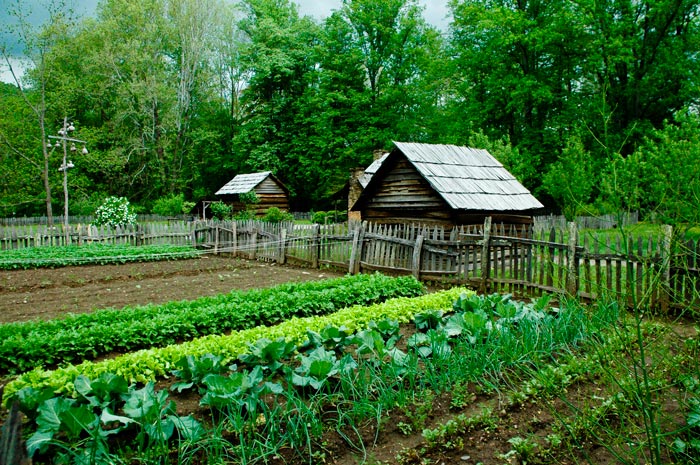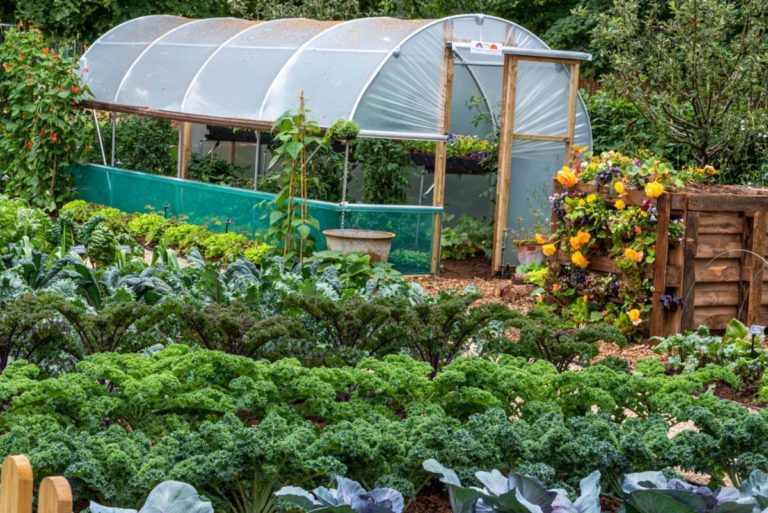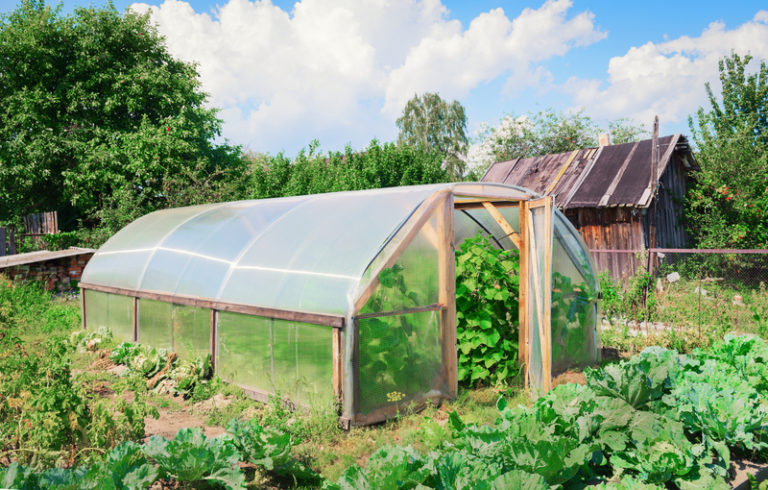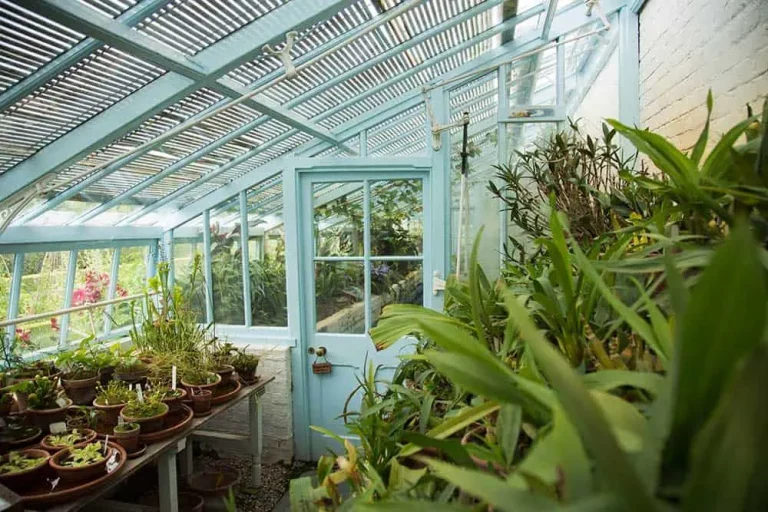Homesteading is a lifestyle that many of us dream of – living off the grid, growing our own food, and being self-sufficient.
But let’s face it, the idea of starting a homestead can be intimidating, especially when it comes to growing your own food.
After all, who wants to spend hours every day tending to a garden or trying to figure out how to can their own vegetables?
The good news is that you don’t have to be an experienced farmer to grow delicious and nutritious off-grid foods on your homestead!
With the right knowledge, tools, and mindset, anyone can cultivate easy-to-grow crops that are perfect for their homestead.
We’ll explore some of the easiest off-grid foods to grow on your homestead, so you can start living that self-sufficient dream.
Greens
Salad greens like lettuce, kale, and spinach are easy to grow and can be harvested in as little as 20 days. They can be grown in containers or directly in the ground.
Salad greens such as lettuce, kale, and spinach are some of the easiest vegetables to grow, and they can be harvested in as little as 20 days.
You can grow them in containers or directly in the ground, and they will thrive in partial shade or full sun.
Lettuce is a cool-season crop, so it does best in cooler temperatures and well-draining soil.
Kale and spinach are more heat-tolerant and can be grown in warmer weather.
In addition to being easy to grow, salad greens are also highly versatile.
You can eat them raw in salads, use them as a base for smoothies, or sauté them with garlic and olive oil for a delicious side dish.
Kale chips, which are simply kale leaves that have been dried and seasoned, make for a tasty and healthy snack.
And with the ability to grow your own greens, you can avoid the chemicals and preservatives often found in store-bought salad mixes.
Off the grid, you can use rainwater or gray water to irrigate your greens, making your garden more self-sufficient and environmentally friendly.
So why not give salad greens a try?
With minimal effort and space, you can have a steady supply of fresh, delicious greens all year round.
Herbs
Many herbs like basil, cilantro, and dill are easy to grow and can be harvested in as little as 20 days. They can be grown in containers or directly in the ground.
They can be grown in containers or directly in the ground.
Growing herbs is a great way to add flavor and nutrition to your meals without relying on store-bought options.
Basil, cilantro, and dill are all excellent choices for beginners, as they are easy to grow and can be harvested in as little as 20 days.
These herbs can be grown in containers or directly in the ground, giving you flexibility in terms of space and maintenance.
They can be used in a variety of dishes, from salads and soups to sauces and marinades.
For example, basil is a popular choice for pesto, while cilantro is commonly used in Mexican dishes like salsa and guacamole.
Dill is also a versatile herb that can be used in pickling and preserving, as well as in dishes like fish and salmon.
Off the grid food enthusiasts will love the fact that these herbs are easy to grow and maintain, and can be used in a variety of delicious and nutritious meals.
Radishes
Radishes are a quick-growing crop that can be harvested in as little as 20 days. They can be grown in containers or directly in the ground.
Radishes are an excellent choice for gardeners who are looking for a quick-growing crop that can be harvested in as little as 20 days.
These crunchy, flavorful roots can be grown in containers or directly in the ground, making them a versatile addition to any garden.
Radishes are easy to care for and can be grown in a variety of conditions, from full sun to partial shade, and in well-draining soil that is rich in organic matter.
They are also a cool-season crop, which means they do best in the cooler temperatures of spring or fall, rather than in the heat of summer.
To get the most out of your radish crop, be sure to plant the seeds about 1/4 inch deep and 1 inch apart, and keep the soil consistently moist but not waterlogged.
With proper care, your radish crop should be ready to harvest in just a few weeks, and can be used in a variety of off-the-grid food dishes, such as salads, slaws, and sandwiches.
Radishes are a great source of vitamin C, fiber, and other essential nutrients, making them a healthy and delicious addition to any meal.
Carrots
Carrots are a hardy root vegetable that can be grown in containers or directly in the ground. They can be harvested in as little as 60 days.
They can be harvested in as little as 60 days.
Carrots are a versatile and nutritious vegetable that can be easily grown in your backyard or even in containers on your windowsill.
They are a hardy root vegetable that can thrive in a variety of climates and soil types, making them an excellent choice for beginner gardeners.
Carrots can be grown in containers or directly in the ground, and they can be harvested in as little as 60 days after planting.
This means that you can enjoy fresh, homegrown carrots just a few weeks after sowing the seeds.
One of the benefits of growing carrots is that they are an off the grid food, meaning they can be grown without relying on store-bought supplies or electrical equipment.
You can plant your carrots using only the sun, rain, and natural soil fertility, making them a great choice for those looking to live more sustainably and self-sufficiently.
Carrots are a great source of vitamins and minerals, including vitamin A, potassium, and fiber, making them a healthy addition to any meal.
Whether you have a large backyard or just a small windowsill, carrots are an excellent choice for anyone looking to grow their own food and live a more self-sufficient lifestyle.
With their ease of growth and abundance of health benefits, carrots are a great place to start your gardening journey.
So why not give them a try and experience the joy of growing and eating your own off the grid food?
Beans
Bush beans and pole beans are easy to grow and can be harvested in as little as 60 days. They can be grown in containers or directly in the ground.
They can be grown in containers or directly in the ground
Beans are a versatile and nutritious addition to any garden or backyard farm.
Bush beans and pole beans are two popular varieties that are easy to grow and can be harvested in as little as 60 days.
Bush beans are compact, determinate varieties that grow well in containers or directly in the ground.
They have a shorter growing season and can be ready to harvest in about 60 days.
Pole beans, on the other hand, are indeterminate varieties that grow up a support, such as a trellis or fence.
They take longer to mature, typically around 80-100 days, but can produce more beans over a longer period of time.
Both varieties can be grown in a variety of conditions and can thrive in partial shade or full sun.
Beans are a great source of protein and fiber, and can be enjoyed in a variety of dishes, from salads to soups to stir-fries.
When growing beans off the grid, it’s important to choose varieties that are disease-resistant and pest-tolerant, such as ‘Blue Lake’ bush beans or ‘Kentucky Wonder’ pole beans.
Beans can be easily preserved through canning or freezing for enjoyment throughout the year.
Peppers
Bell peppers and hot peppers are easy to grow and can be harvested in as little as 70 days. They can be grown in containers or directly in the ground.
Growing peppers is a rewarding and straightforward process that can provide a bountiful harvest in as little as 70 days.
Both bell peppers and hot peppers can be grown in containers or directly in the ground, offering versatility and flexibility for gardeners with limited space or specific growing requirements.
Bell peppers are a popular choice for their sweet and crunchy texture, while hot peppers offer a spicy kick that can add flavor to a variety of dishes.
When growing peppers, it’s essential to plant them in well-draining soil with full sun and consistent watering.
As they mature, peppers should be harvested regularly to encourage continued growth and prevent over-ripening.
Off the grid food enthusiasts will appreciate the fact that peppers are easy to preserve through canning, dehydrating, or freezing, allowing them to enjoy their harvest well into the off-season.
Whether you’re looking for a mild and sweet bell pepper or a fiery hot pepper, growing peppers is an excellent choice for any home gardener.
Tomatoes
Tomatoes are one of the most popular off-grid foods and can be grown in containers or directly in the ground. They can be harvested in as little as 70 days.
Tomatoes are one of the most popular off-grid foods, and for good reason.
They are relatively easy to grow, can be produced in a variety of conditions, and are a nutritious and versatile ingredient in many dishes.
Tomatoes can be grown in containers or directly in the ground, making them a flexible option for gardeners with limited space or those who prefer to grow their crops directly in the soil.
Tomatoes are a warm-season crop, meaning they thrive in the warmer temperatures of summer and can be harvested in as little as 70 days after planting.
This quick turnaround makes tomatoes an ideal choice for off-grid gardeners who are looking to produce a high yield in a short amount of time.
In terms of specific varieties, cherry tomatoes and Roma tomatoes are both excellent choices for off-grid gardening.
Cherry tomatoes are compact and produce a high yield, making them a great option for small spaces or for gardeners who want to grow a lot of tomatoes in a limited amount of space.
Roma tomatoes, on the other hand, are a more traditional variety that is known for its sweet and tangy flavor.
They are slightly larger than cherry tomatoes and can be harvested in about 80 days.
In addition to the variety of tomatoes you choose to grow, it is important to also consider the growing conditions and care for your tomato plants.
Tomatoes prefer well-drained soil that is rich in organic matter, and they need consistent moisture throughout the growing season.
They also benefit from regular fertilization and proper support as they grow.
Tomatoes are one of the most popular off-grid foods and can be grown in containers or directly in the ground.
For the best results, choose a variety that suits your growing conditions and desired harvest time.
Cherry tomatoes are a great choice for small spaces and can be harvested in as little as 60 days, while Roma tomatoes take about 80 days to mature and offer a sweet and tangy flavor.
When growing tomatoes off the grid, it’s essential to consider the soil conditions, as they prefer well-drained soil that is rich in organic matter.
Tomatoes also need consistent moisture throughout the growing season, so make sure to provide them with enough water.
Regular fertilization and proper support as they grow can also help to ensure a bountiful harvest.
When it comes to growing tomatoes off the grid, the possibilities are endless, and with the right information and techniques, you can enjoy an abundance of fresh, delicious tomatoes straight from your own off-grid garden.
Off-grid tomatoes can be canned, preserved, or enjoyed fresh, and they offer a level of self-sufficiency and flavor that can’t be beat.
So grab a shovel, some seeds, and let’s get growing!
Off-grid foods like tomatoes offer a level of self-sufficiency and flavor that can’t be beat.
By growing your own off-grid garden, you can enjoy fresh, delicious produce without reliance on grocery stores or commercial farming practices.
With a little know-how and some elbow grease, you can have a thriving off-grid garden that produces an abundance of fresh, flavorful food, all while reducing your carbon footprint and dependence on external systems.
Cucumbers
Cucumbers are an easy-to-grow vine vegetable that can be harvested in as little as 60 days. They can be grown in containers or directly in the ground.
They can be grown in containers or directly in the ground.
Cucumbers are an excellent choice for gardeners of all skill levels and spaces, as they are a hardy and adaptable plant that can thrive in a variety of conditions.
They can be grown in containers, such as 5-gallon buckets or raised beds, or directly in the ground.
Cucumbers prefer well-drained soil and full sun, but they can also tolerate partial shade and a range of soil types.
One of the biggest advantages of growing cucumbers is their quick growth and high yield.
Depending on the variety, cucumbers can be harvested in as little as 60 days, making them an ideal choice for summer salads and snacks.
To ensure the best yields, it’s important to provide cucumber plants with adequate support, such as a trellis or cage, to help them grow up and out of the soil.
Off the grid food enthusiasts may be interested to know that cucumbers are a great source of vitamins and minerals, including potassium, magnesium, and vitamin K.
They can be eaten fresh, pickled, or used in a variety of dishes, making them a versatile and nutritious addition to any off the grid food garden.
Want More? Dive Deeper Here!
Hey there! If you’re the type who loves going down the rabbit hole of information (like we do), you’re in the right spot. We’ve pulled together some cool reads and resources that dive a bit deeper into the stuff we chat about on our site. Whether you’re just killing time or super into the topic, these picks might just be what you’re looking for. Happy reading!






